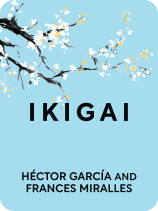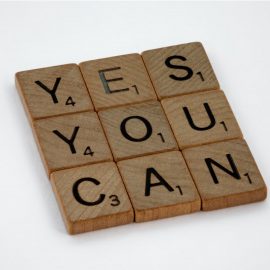

This article is an excerpt from the Shortform book guide to "Ikigai" by Héctor García and Francesc Miralles. Shortform has the world's best summaries and analyses of books you should be reading.
Like this article? Sign up for a free trial here .
How does one develop resilience? Is there a secret formula that can help you become better at handling the curve balls that life throws at you?
Resilience is the ability to handle setbacks and just keep going. The Japanese link the attitude of resilience to ikigai, or life purpose. They believe that people who clearly know their ikigai—their reason for being—tend to develop resilience in their pursuit of it.
Keep reading to learn how to develop resilience the Japanese way.
Pursue Your Ikigai to Develop Resilience
In Japanese understanding, a strong attitude of resilience is connected to a clearly defined ikigai. In fact, resilience and ikigai are mutually reinforcing. Resilience is the quality that enables people to keep on pursuing their ikigai with passion even in the face of setbacks and difficulties.
To strengthen your pursuit of your ikigai through resilience, do two things: Learn to embrace life’s flawed and fleeting nature, and then go beyond mere resilience by becoming antifragile.
Embracing Impermanence and Imperfection
The Japanese concepts of wabi-sabi and ichi-go ichi-e can help you develop resilience in your own life:
Wabi-Sabi
Wabi-sabi means finding beauty in imperfection and loveliness in things that are incomplete or flawed. The basic idea of the concept is that only flawed and imperfect things reflect the reality of an imperfect, incomplete, and fleeting world. A standard example of wabi-sabi in action is to find great value in a teacup that’s cracked or irregular.
To apply this principle in your own life, look around. You can find plenty of imperfect things in your daily life—objects, situations—where you can fruitfully apply this attitude.
Ichi-go Ichi-e
Ichi-go ichi-e is the Japanese attitude of recognizing that the current moment only exists right now and will never come again. Its practical application is to quit losing yourself in memories of the past and thoughts about the future. Instead, choose to fully inhabit the present.
Japanese culture embraces the fleeting, vanishing nature of what we are and what we create. You can see this attitude in play in Japanese architecture. Unlike the West’s imposing and permanent-feeling cathedrals, temples, and skyscrapers, traditional Japanese buildings are made of wood, reflecting the spirit of valuing imperfection and recognizing impermanence.
Practicing wabi-sabi and ichi-go ichi-e in tandem can help you to develop resilience, live in the present, and enjoy each moment by finding beauty in imperfection and recognizing imperfection as an opportunity for growth. These concepts teach that because all things vanish, you have to live your ikigai now or risk never living it at all. When you clearly know your ikigai, and when you embrace imperfection and impermanence, you’ll find that each moment seems to offer almost unlimited possibilities.
Learning From Buddhism and Stoicism
Two famous historical examples, one from ancient Eastern philosophy and one from ancient Western philosophy, can help to further illustrate the principles of wabi-sabi and ichi-go ichi-e.
First, Siddhartha Gautama, better known as the Buddha, awakened to the realization that all life is impermanent and full of suffering. Born a prince, he rejected his wealth and position and went on a quest for enlightenment that led him to sample the extremes of both indulgent pleasure and strict asceticism. In the end, he realized that it was better to follow the “middle way” of moderation, neither rejecting pleasures nor becoming enslaved to them. This attitude enabled him and his followers to remain calm and develop resilience in the face of life’s empty turmoil.
Second, and similarly, the ancient Greek philosophy of Stoicism taught people to control their pleasures and desires in order to avoid being controlled by them. Like Buddhism, it taught people to reduce their ego and take control of negative emotions. Stoics were also careful to distinguish between what happens and how you react to it. They said true satisfaction only comes from achieving a state of resilient tranquility or apatheia characterized by freedom from passion, so that you don’t mind what happens or doesn’t happen. They said this liberates you from both your “negative” feelings (such as anxiety and shame) and your “positive” ones (such as happiness and love).
Becoming Antifragile
In your quest to develop resilience, you can also benefit from learning about the advanced state of resilience that Nassim Taleb has termed antifragility. When antifragile things are harmed, they don’t just survive, they get stronger. Becoming antifragile is the ultimate way to underwrite the lifelong fulfillment of your ikigai. If you’re antifragile, the many challenges you’ll inevitably face when pursuing your ikigai will only intensify your pursuit of it by giving you added strength, skills, and determination.
There are several concrete steps that you can take to become antifragile:
Create redundancies. Act on the old advice to avoid putting all your eggs in one basket. For example, create multiple streams of income. That way, if something bad happens to one thing—for instance, if one of your income streams dries up— you aren’t totally bereft.
Combine a conservative approach in some areas of your life with multiple small risks in others that may produce a valuable payoff. In other words, wisely “diversify your portfolio” in all areas of life. Maintain a core of safe stability while taking some calculated risks that could really pay off. This can apply to your finances, your career, your relationships, or anything else.
Remove from your life whatever makes you fragile. First, take an inventory of your fragile areas. Do you eat poorly? Do you build your life around a job you hate or waste your time on social media? Next, drop those vulnerabilities. Eject those down-dragging things from your life.
Follow your ikigai. Antifragility and ikigai are complementary. Knowing and living out your ikigai actually makes you antifragile because it gives you something to keep living and striving for, while taking deliberate steps to become antifragile, like the sample steps listed above, strengthens the clarity of your ikigai and the fulfillment you experience in pursuing it.
Antifragility also harmonizes beautifully with wabi-sabi and ichi-go ichi-e. When you become antifragile, you learn to welcome life’s uncertainty, imperfection, and fleetingness. You know you can bounce back from life’s challenges all the more strengthened and devoted to your ikigai.
(Shortform note: For more information on antifragility, see our summary of Taleb’s Antifragile.)

———End of Preview———
Like what you just read? Read the rest of the world's best book summary and analysis of Héctor García and Francesc Miralles's "Ikigai" at Shortform .
Here's what you'll find in our full Ikigai summary :
- How to apply the concept of ikigai, or life purpose, to your own life
- Why the people of Okinawa live longer than people anywhere else
- The 10 commandments of ikigai






